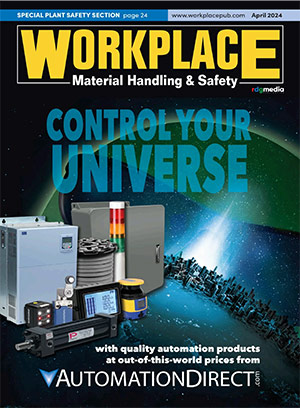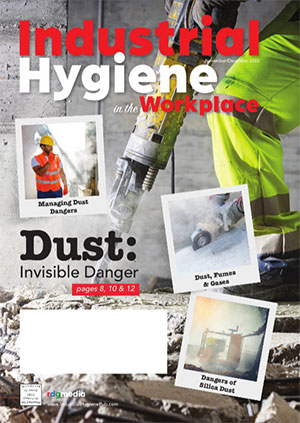How to Manage an Effective Hearing Conservation Program

The Council for Accreditation in Occupational Hearing Conservation (CAOHC) offers an online Noise Measurement Course that provides guidance for conducting noise exposure surveys and subsequent data evaluation and is a useful resource for industrial hygienists or hearing conservation program administrators. (photo courtesy CAOHC)
Noisy work environments can cause hearing loss in workers assigned to those areas. Equipment that generates unwanted sound, or noise at or above 85 decibels, A-weighted (dBA), is normally the cause. Understanding the amount of noise in the workplace is the first step in managing an occupational hearing conservation program.
It is in the best interests of the employer and the workers to reduce the impact of noise sources in the workplace using engineering controls. The duration of contact with those sources informs the risk for hearing loss among exposed workers.
Noise dosimetry data (i.e., exposure sampling) collected from workers assigned to areas where sources are present will indicate if a hearing conservation program is needed. An effective program, including annual audiometric surveillance of workers exposed to noise levels equal to or exceeding the OSHA Action Level of 85dBA, can assist an employer in detecting early signs of hearing loss. This also provides a measure for the effectiveness of selected noise controls.
Identify and Detect Sources
Mature hearing conservation programs have identified workplace noise sources of concern and have, hopefully, managed them to reduce the magnitude of exposure at the point of impact, the aural zone. In some fixed facilities with heavy, rotating industrial equipment, this may be next to impossible or at least “infeasible.”
For this situation, what do most employers do? Some rotate workers in and out of the noisy areas, so as not to exceed the eight-hour, time-weighted average Action Level (AL) of 85 dBA. Care should be taken when choosing this administrative control, however, as it only takes one exceedance per year to require medical (audiometric) surveillance (testing) of an exposed worker, according to a standard interpretation issued by OSHA in 2004.
If you are an employer that believes the effective use of personal protective equipment (PPE), such as plugs, muffs or noise-cancelling devices can be useful, I agree. They certainly can be effective when used properly by trained employees who do so each-and-every time one enters an area exceeding 85dBA.
If you are an employer that believes exposure to noise disappears or is reduced to a manageable level using PPE, such that an audiometric testing program can be discontinued on the basis of PPE use, think again. While hearing protective devices can reduce noise levels inside the ear, the noise remains—as does the potential for exposure. Audiometric testing programs provide a useful means of identifying early signs of hearing loss among exposed workers and can provide insight into the effectiveness of your hearing conservation strategy.
Administering a hearing conservation program in a general industry environment is no easy task. Mobile workers, impact noise and occasional use of noisy mobile equipment can exacerbate this responsibility. Knowing what is making noise and how often workers are near the noise source(s) is the first step in identifying workers, or groups of workers (e.g., similar exposure groups) having the potential to exceed the AL and, therefore, are at risk for noise-induced hearing loss (NIHL). This is, of course, why OSHA requires audiometric testing of these individuals.
In a static work environment with a continuous process (and noise), the process of identifying noise-exposed workers may be fairly easily. If Worker A stands at Machine A operating station for four hours, his/her exposure can be estimated with a sound level meter and some math. In a dynamic work environment and/or batch process, noise levels are variable, and exposures may change with a change in equipment or its placement in the work area.
Many other safety programs and processes, such as the concept of Management of Change, can identify impending changes in the workplace and assist an industrial hygienist in modifying worker noise exposure estimates.
When to Assess Workers

It is in the best interests of the employer and the workers to reduce the impact of noise sources in the workplace using engineering controls. (photo courtesy CAOHC)
When exposure assessments change, particularly when workers are no longer exposed to the AL, removal of those workers from the testing program is necessary. In mature programs comprised of workers who have had hearing acuity tested annually as part of a surveillance program for years, this process may be perceived as a benefit. Removal of any worker benefit is generally unpopular. As such, this “benefit” may be continued unnecessarily. This phenomenon can lead to more workers enrolled in the program over time, some of whom are no longer exposed to enough noise to warrant enrollment.
While some disagreement exists among medical researchers, the consensus opinion remains that NIHL stops when workers are removed from the noise. An effective hearing conservation program requires ongoing management to determine who should be monitored and who should not.
Screening audiometric test results can provide a clue about the etiology of hearing impairment. There are many clinical characteristics associated with NIHL. For example, early NIHL is suspected when a reduction in hearing acuity occurs at the 2,000-4,000 Hertz frequencies. Threshold shifts identified from audiometric screenings should prompt the hearing conservation program administrator to investigate attribution of the shift to the occupational environment.
If noise exposures at or above the time-weighted AL are not occurring in the workplace, audiometric screening is not required in accordance with the OSHA Standard. Yet, NIHL is only one of a few types of hearing loss a worker may suffer. Consideration should be given for keeping workers enrolled in a hearing conservation program, if they are exposed to occupational and/or environmental ototoxic chemicals, compounds or other agents.
A physician or a certified audiologist can advise an administrator as to whether a loss should be recorded as an occupational illness on the employer’s OSHA 300 log. Work-relatedness determinations should be made in consultation with physicians and/or licensed health care professionals, such as a “Professional Supervisor” certified by the Council for Accreditation in Occupational Hearing Conservation (CAOHC), when necessary. Employers should find a difficult path arguing the work-relatedness of hearing loss found as a result of an audiometric testing program administered in accordance with the Occupational Noise Standard.
Control Noise Exposure
Hearing acuity may decline in workers from the beginning to the end of a shift, known as a temporary threshold shift. As hearing conservation professionals, we are tasked with preventing this by controlling the noise or worker exposure to it, as recurring temporary shifts will eventually result in a permanent one.
This phenomenon may occasionally result in mistakenly characterizing a temporary shift as permanent. Certainly, retesting individuals identified with a standard threshold shift within 30 days of the initial test may assist an administrator in determining the permanence or accuracy of the initial test. Given the fact these tests are subjective and dependent on an individual’s response to auditory stimuli, some year-to-year variation in individual test results should be expected. This phenomenon, coupled with changes in the quality of audiometric testing and/or equipment, often leads to difficulty determining whether a threshold shift is permanent or spurious.
NIHL is insidiously slow and nearly imperceptible among affected patients. Certainly, industrial noise is a major contributor to NIHL when noise exposures at or above the AL, time-weighted average occur in the workplace.
Significant noise exposures may exist outside the workplace, also. Measuring the relative contribution from the workplace or home is so difficult, that any contribution from the workplace is often viewed as the primary cause of loss. Unfortunately, no compensation or prosthetic equipment will mitigate permanent hearing loss, allowing a patient to recover the part of themselves that has been lost forever. Therefore, primary and secondary prevention remains the best strategy for protecting noise-exposed workers. IHW
About the Author:
Timothy Hicks, MSPH, CIH, CSP serves as a council member for The Council for Accreditation in Occupational Hearing Conservation (CAOHC) representing the American Society of Safety Professionals (ASSP). In his professional life, Hicks serves as a Health, Safety and Environment (HSE) Executive with broad-ranging technical experience in public health and industrial hygiene. He holds a Master of Science–Public Health from Tulane University. He has over 20 years’ experience in occupational health and safety and is currently President of HHS Consulting, Inc. of Charleston, SC./Golden, Colo.



